Malaysia Airlines doesn’t fly a lot of truly long haul routes these days, a far cry from its heyday Going Beyond Expectations across Six Continents. Much of the airline’s long haul route network today is focused on the Asia-Pacific region to the east, with only a handful routes heading west past the Indian subcontinent.
One of these is a series of daily flights between Kuala Lumpur and Doha, operated in collaboration with fellow oneworld member Qatar Airways. This is a win-win deal for both airlines, as MH gets access to QR’s wider range of destinations, and QR gets access to MH’s regional network with MH acting as a feeder for KUL-origin passengers into QR’s network. 2 flights per day are offered from KUL, with flight MH160 being the first of the two nightly departures.
I got the MH long haul Economy Class experience for the first time in a long while on MH 160 on my way to Manchester. To sum up, it was the classic Malaysia Airlines experience: Good, but not good enough.
Buying my tickets
I booked my tickets on the Malaysia Airlines website, which offered me slightly lower prices versus the Qatar Airways website. As I had only 1 hour 45 minutes to transit at Doha, I decided to shell out the extra money for seat 12K – an extra legroom seat in the first row of Economy, both to exit the aircraft earlier and to give myself a treat.
Departure from Kuala Lumpur International Airport
The experience started with a long bag-drop queue at KUL Terminal 1’s check in row F, the home of MH’s international economy check in desks for all international flights. MH’s ground crew kept things moving and I had my bag checked after some 20 minutes of queueing.
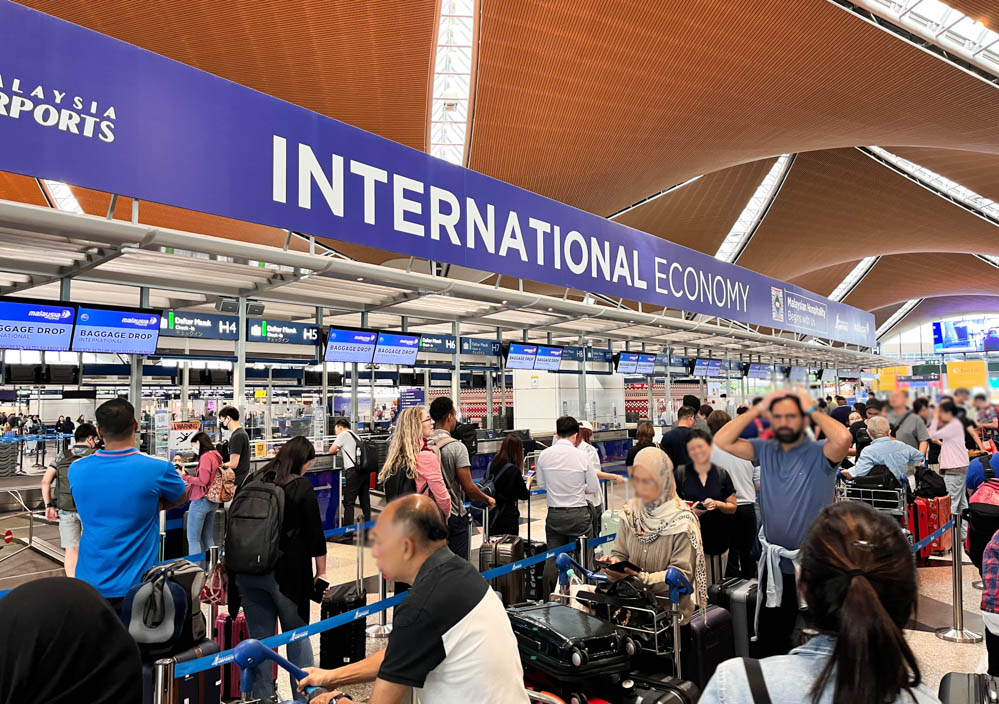
KUL Terminal 1 is in the midst of a slow transformation process with MAHB trying to reverse the airport’s slow slide down the rankings. More attention is being given to opening new retail and F&B outlets, something the 26-year old Terminal 1 has always fell short in. I must commend the effort, but it’s also quite obvious that Terminal 1 was designed in a different time that gave less focus to airside retail.
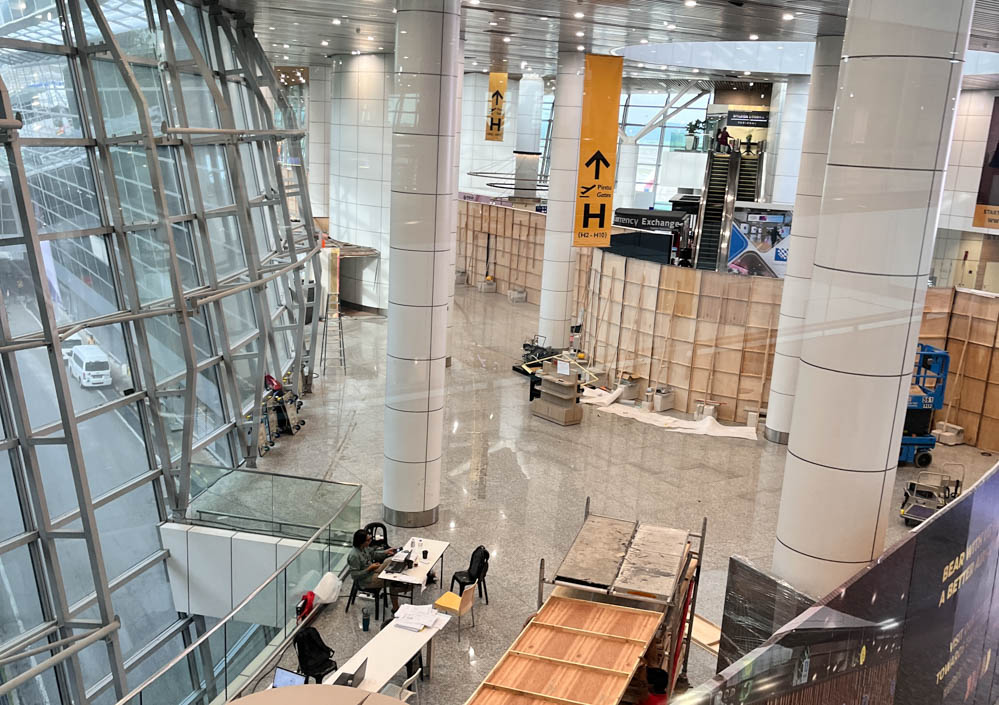
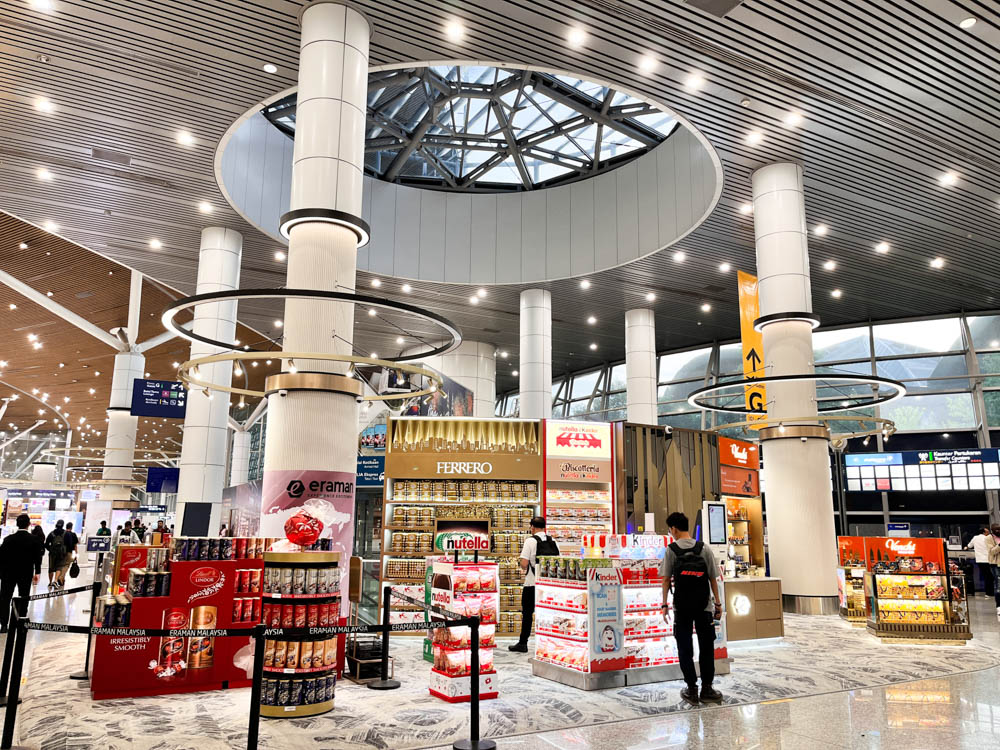
Not helping KUL’s airport experience is the as of yet unfinished Aerotrain upgrade. Buses are still in use at the time of writing, while contractors race to meet the promised January 2025 deadline. There is visible progress though, and workmen could be seen installing new track fixtures from my bus ride over to the satellite terminal.
Operating my flight was 9M-MAD, an Airbus A350-941 which had its first flight in January 2018 and one of seven A350 flagships in MH’s stables. Boarding and push back were completed on time, but owing to the red-eye traffic rush at KUL, we were nevertheless held up at the turn in to runway 14R, resulting in a 7 minutes’ delay to our departure time.
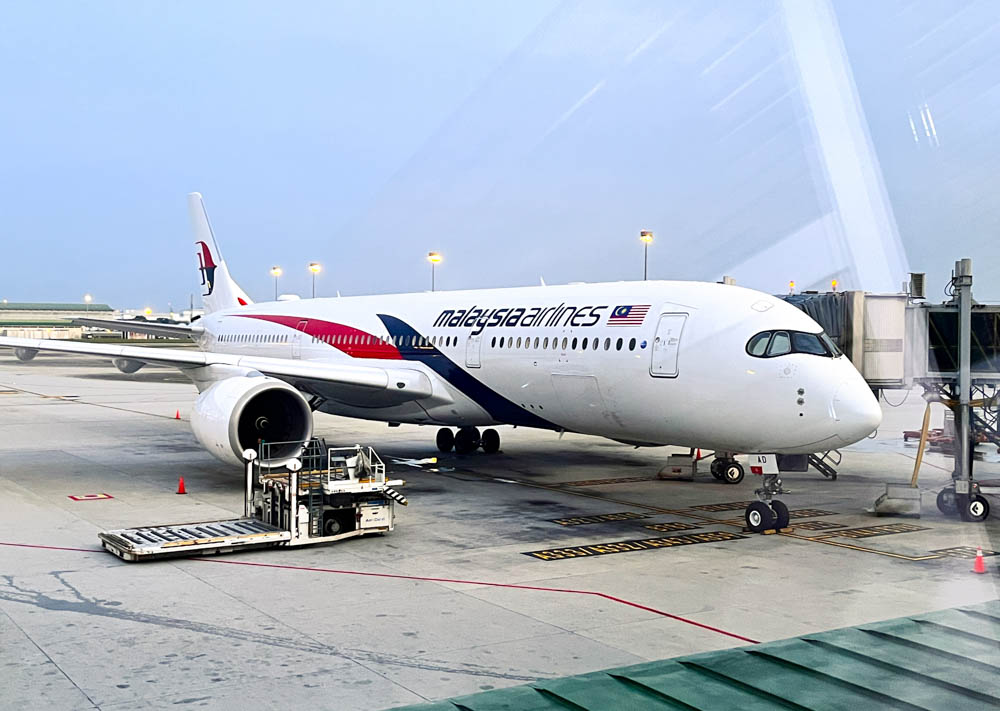
Onboard Cabin & Amenities
Malaysia Airlines’ A350s have the fleet’s most modern and premium cabin interior, although this isn’t saying much given the age of the airline’s A330s and its recent shift to IFE-less slim-line seats on the B737s. A 3-class onboard product is offered on the A350s, though the fleet will eventually be retrofitted to a 2-class standard via the removal of Business Suite (which used to be branded as First Class).
Malaysia Airlines Airbus A350 Economy Class (Extra Legroom)
There are 247 Economy Class seats in 29 rows onboard in a 3-3-3 configuration, with the first 3 rows forming the extra legroom offering. Seat pitch is at 36 inches versus the standard seats’ 32 inches.
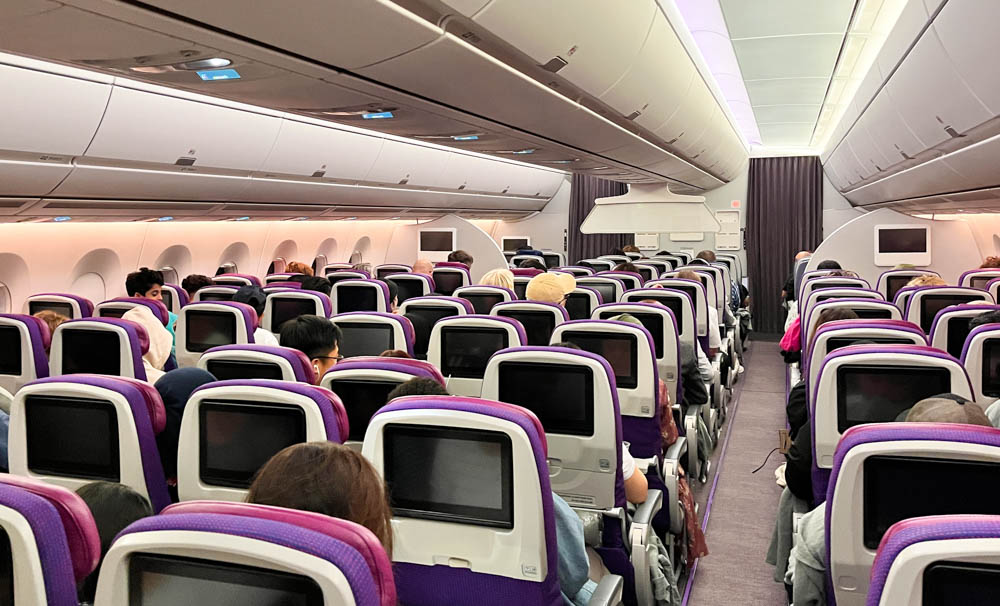
The first (bulkhead) row offers greater legroom, which in my opinion is the best way to spend the RM 258 needed to reserve the extra legroom seats. You get easy access to the aisle without having to bother your seatmates, and stretching out is easy for those of us with longer legs.
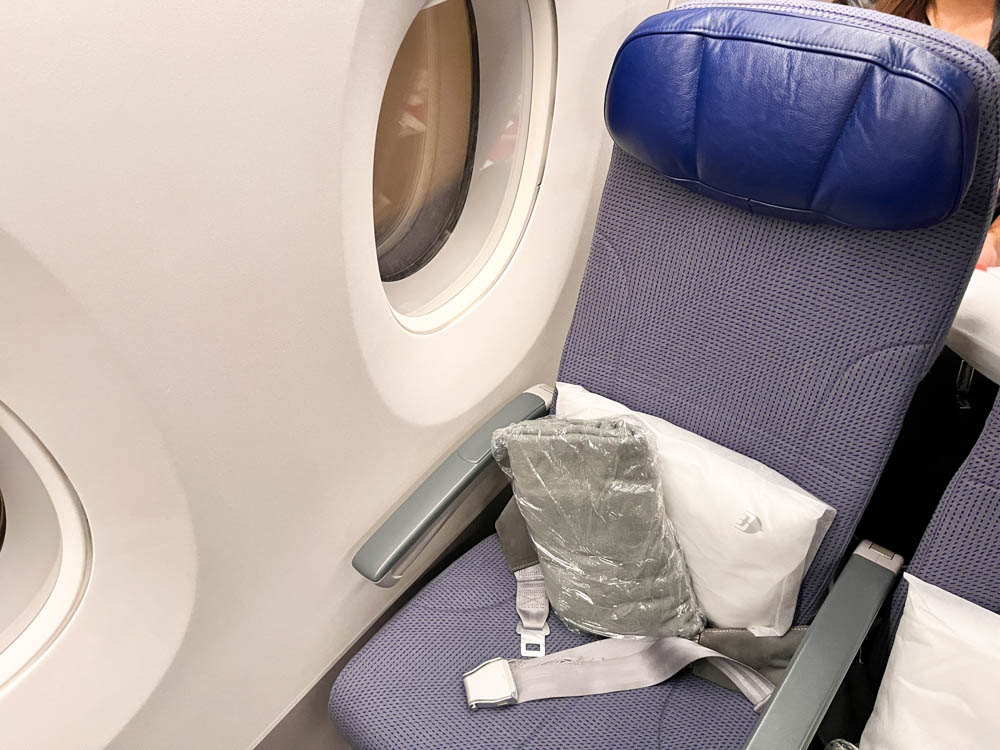
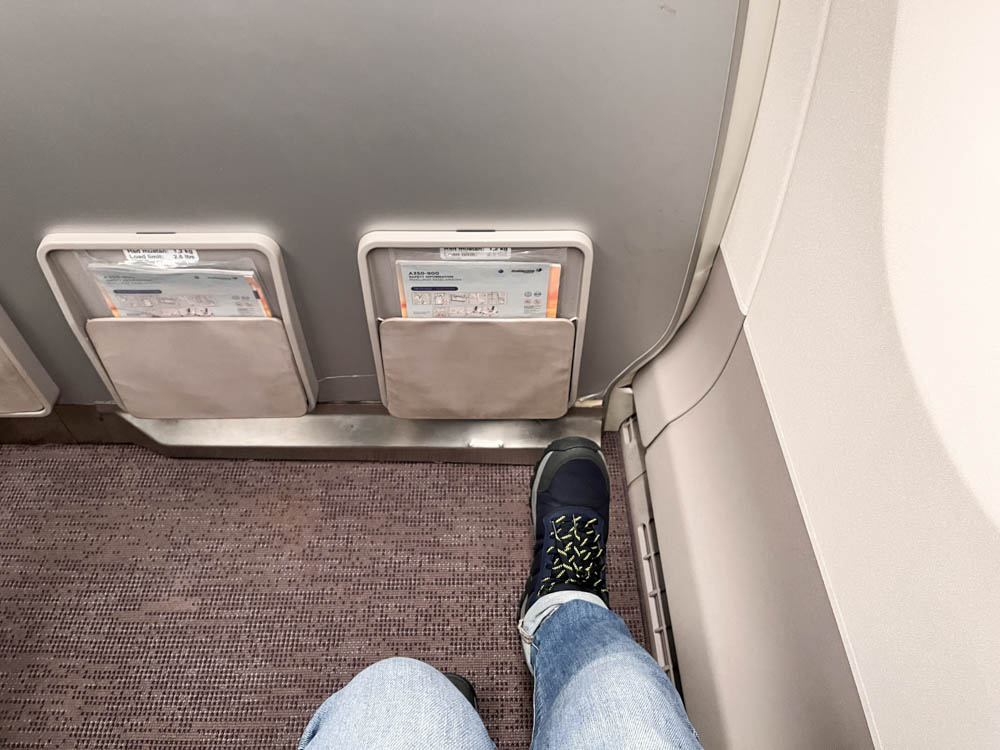
Extra legroom aside, these seats are no different from the rest of the Economy Cabin. You get a 11-inch IFE screen, universal power plugs, a pillow and a blanket, and an adjustable headrest. It certainly isn’t a Premium Economy product, unless you happened to fly on the single ex-SAS A350 in the MH fleet – those retain the SAS cabin product including a proper Premium Economy cabin that MH markets as extra legroom seats.
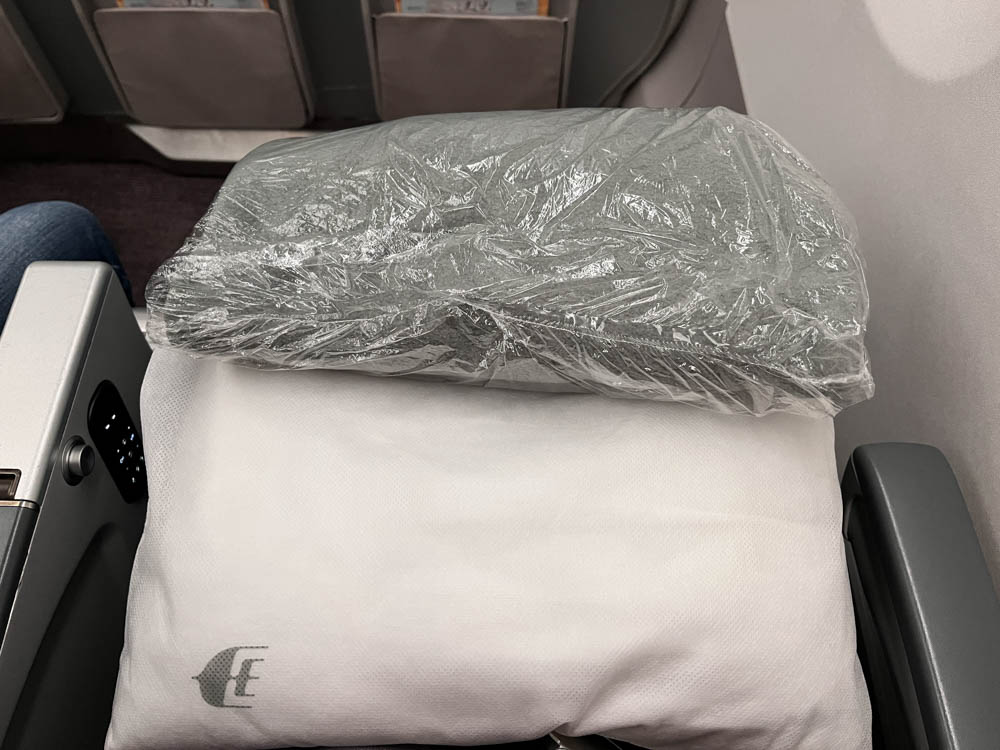
Now I wish I could say that I had a comfortable flight, but that simply wasn’t the case. The bulkhead row legroom was excellent, but the seat itself was a let down. The backrest felt flat, the seat squeaked every time I shifted in it, and it really did feel like the seat was just worn out from heavy use. I reclined and managed to get some sporadic sleep, but I kept having to shift my back because it started to get sore after a while with the flat backrest. The seat on my return flight from Doha to Kuala Lumpur was in much better shape, but it really is a display of inconsistency.
It’s all a bit disappointing, especially when this is the national carrier with aspirations of regaining its past glory. I know MH plans to refresh their A350s with the new Economy and Business Class seats due to debut on the new A330neos, but in my opinion that refresh was already needed yesterday on its existing flagship aircraft.
Malaysia Airlines Inflight Entertainment
MH’s A350s run a version of the Select IFE system onboard. It’s not exactly on par with its competitors’ systems but is still a decent way to pass the time – assuming it works in the first place.
Just before departure, a crew member walked up to my seat with a printout in hand and informed me that the headphone jack on my armrest was inoperative, but that I would still be able to plug in into my screen’s jack. I figured that was a manageable issue, but then I later realised that my screen was stuck in the stow position. You see, the bulkhead row IFE screens are mounted on an arm and stowed underneath the seats for takeoff and landing. The problem was that mine couldn’t be moved from its position. Either I was doing it wrong, or it really was stuck.
This all meant that I didn’t have access to IFE for the entire flight. I’m not big on IFE so it didn’t really affect me, but I can imagine some other passenger raising a fuss about this. To be frank, it also doesn’t reflect well on MH, as it implies that the cabin equipment are not kept in good repair.
Malaysia Airlines inflight Wi-Fi
I’ll cut straight to the point – there is free Wi-Fi for everyone onboard all of MH’s A350s and onboard some of their A330s. This is a marked contrast from other airlines that offer either a complimentary 1 hour session, or a pay-to-use scheme. The free Wi-Fi was easily the best feature onboard, as it meant I could continue conversations I was having on the ground, track my flight on my tracker apps, as well as indulge my workaholic tendencies by checking emails and writing this post.
Activating the free Wi-Fi is easy enough, as you’ll get redirected to the login page once connected. The only problem with the Wi-Fi is that it’s tied to the IFE system onboard, meaning you lose connection if the IFE system needs to be rebooted, which did actually happen on my flight.


I did two speed tests onboard some 15 minutes apart, which gave download speeds of 6.37 mbps and 4.04 mbps respectively. Actual usage showed consistent speeds on par with a slow WiFi connection on the ground. Simple things like sending WhatsApp messages work pretty fast, but toss in large images (like browsing Instagram) and it starts to get a bit slow. Speeds also fluctuate depending on the aircraft’s location and connection with the satellite. Fair enough, after all this is Wi-Fi on an aircraft going more than 500km/h at 40,000 feet.


I’m also happy to report that updating draft posts on WordPress works fine, which means Urbanist Wanderer’s content can be taken to new heights. Yes, the majority of this post was drafted onboard this very flight!
Onboard Catering
Malaysia Airlines KUL-DOH Dinner service
Dinner was served around an hour after departure, beginning with post-takeoff drinks. A choice of Nasi Lemak with prawn sambal, Nasi Goreng with Chicken Satay, and Braised Beef Rump was offered. Chef on Call was available for this route out of KUL, so I pre-booked the Nasi Goreng to try MH’s famed satays.

To be quite frank, the Satay was excellent – it was fragrant and had that mild charred taste (courtesy of cooking on a charcoal grill), and the peanut sauce (kuah kacang) didn’t disappoint either; The Nasi Goreng on the other hand, was disappointing. The rice was a bit mushy, and there wasn’t much of other ingredients with only a sprinkling of sliced long beans. It reminded me of the RM 2 fried rice from my high school days, and that’s not a good sentiment to be having on the national carrier calling itself a premium airline.
The rest of the tray contained a bun (paired with butter and jam), a smoked chicken salad, a piece of chocolate cake, and a bottle of water. These were all good, but not exactly outstanding either. Flight attendants also offered a range of juices and alcoholic beverages to go with the meal, but I opted to stay hydrated with the provided bottle of water.
I wasn’t expecting anything more than the laid out dinner meal, but the flight crew did come around after serving the dinner course to give each passenger a pack of chocolate-coated vanilla ice cream. Quite a nice touch!

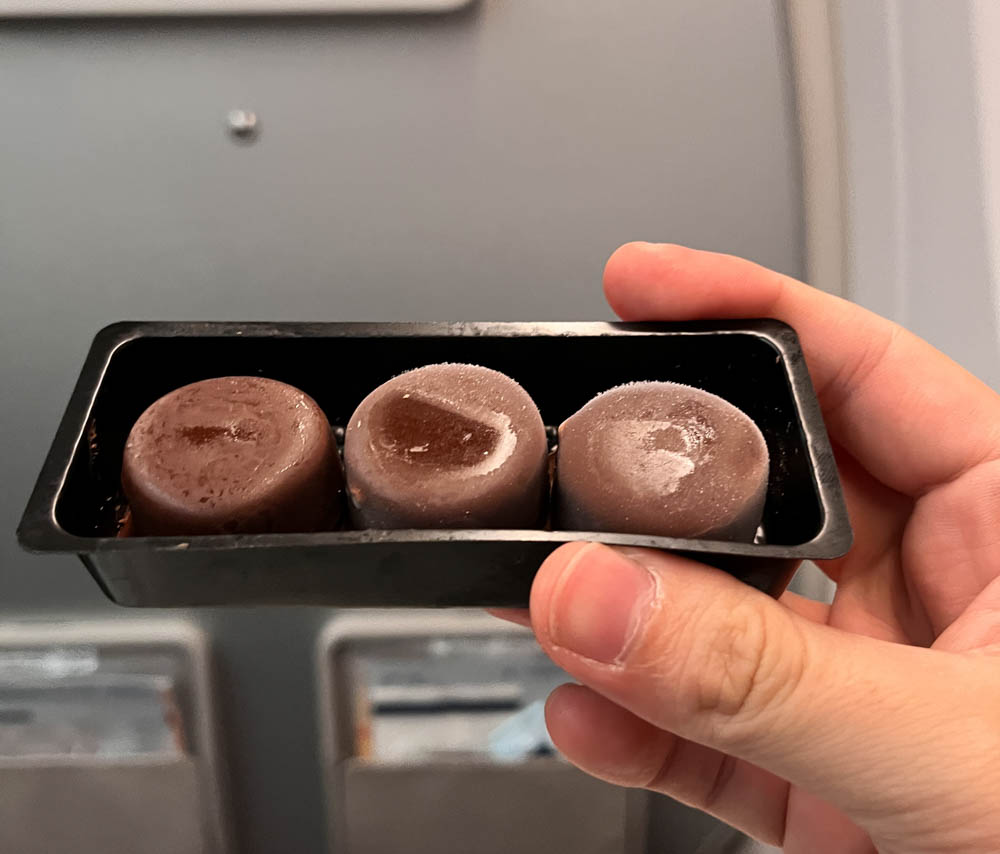
Malaysia Airlines KUL-DOH Supper service
The lights came on around 2 hours before our arrival at Doha, and flight attendants offered passengers a choice of either a vegetarian puff or a chicken puff for supper. I went with the chicken puff, which was given to me in a neat little box, and turned out to be quite savoury and filling. I just wished they designed the box in a way that lets me grasp the puff without getting my hands oily.
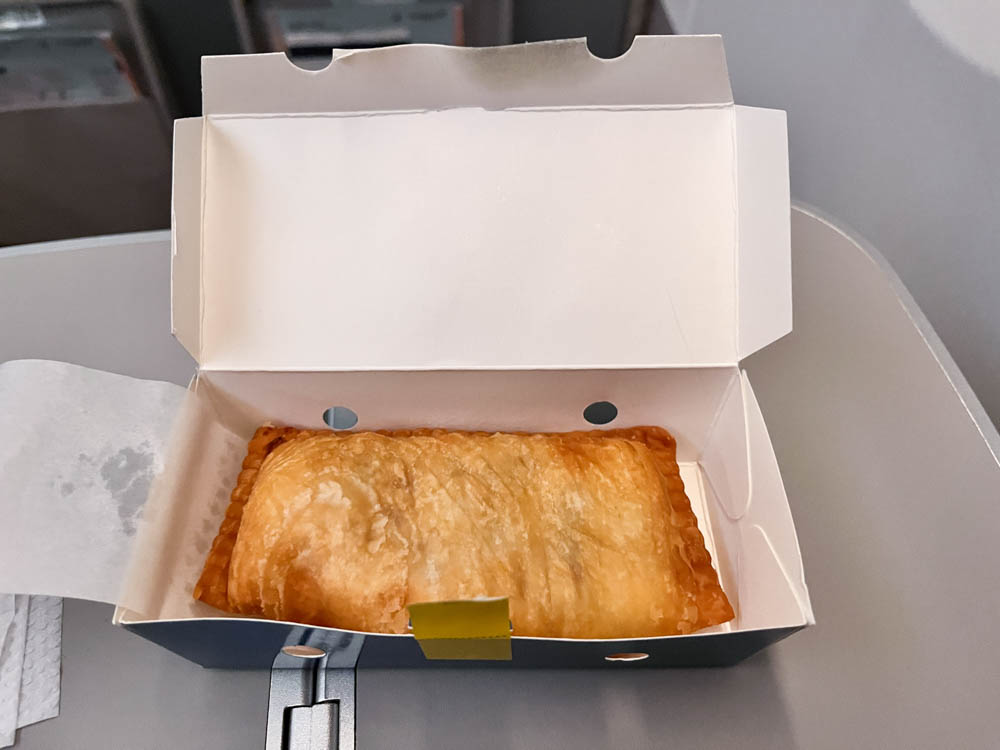
I’d honestly rate both meal services as “acceptable” in terms of quality, but the lacklustre Nasi Goreng really brought down the whole experience. It does demonstrate that MH still has some ways to go to achieving consistency.
Arrival at Doha Hamad International Airport
With the supper service completed, the cabin was strapped in and prepared for an almost-midnight arrival at Doha. Unfortunately I was sitting on the wrong side of the aircraft, and my view on final approach was of the inkling black waters of the Persian Gulf instead of the brightly lit streets of southern Doha.
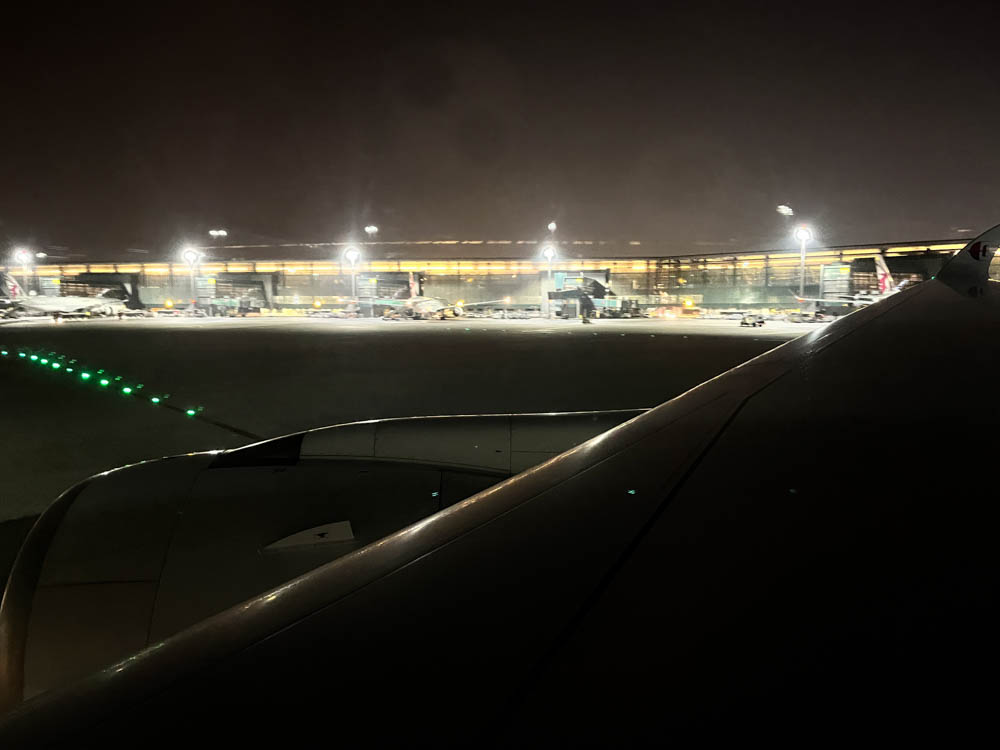
Our aircraft parked at a remote stand, and we were then bussed to the terminal. It’s always nice to disembark from a widebody via stairs, but I’ve seen enough jokes about DOH to know that this is unfortunately a common occurrence at one of the world’s best airports.
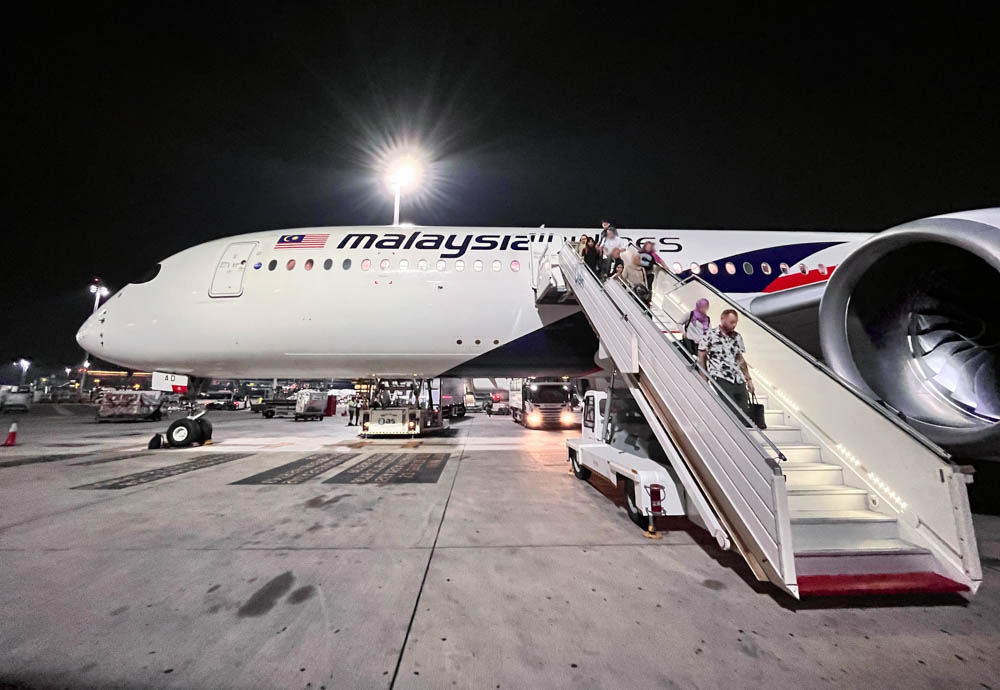
Final Thoughts
Malaysia Airlines has a bit of a reputation for being inconsistent and not quite up to par with its competitions. The airline is most definitely aware of the former issue, but passengers are a demanding bunch and they’re not really interested in whether steps are being taken to make things better – they just want things to be perfect when they step onboard. The airline’s strength remains its excellent cabin crew, people may understand that the inflight offerings aren’t up to par with more premium carriers, but people will remember if the cabin hardware was faulty.
With all that being said, it was still a good way to get to Doha for a connecting flight. I certainly would fly MH long haul again if I had the chance to do so.
Comments
4 responses to “REVIEW | Malaysia Airlines A350 Economy Class (Kuala Lumpur to Doha)”
[…] seat on this aircraft was in much better shape than my extra legroom seat on the outbound flight from KUL. The cushions and backrest provided adequate support, and I managed to have a decent night’s […]
[…] this sounds like my earlier review of the airline’s A350 Economy Class, that’s because the same issues were present on both flights’ cabin. Malaysia Airlines […]
[…] (don’t even get me started on their A330-200s). I recently flew on one of MH’s A350s to Doha in Economy, and the seat was tired and lackluster versus MH’s […]
[…] to prioritise jet bridge access for departing Qatar Airways flights, while arriving flights (like mine from Kuala Lumpur) get the remote stand treatment. I’ve no issues with boarding via stairs, but it does reduce the […]